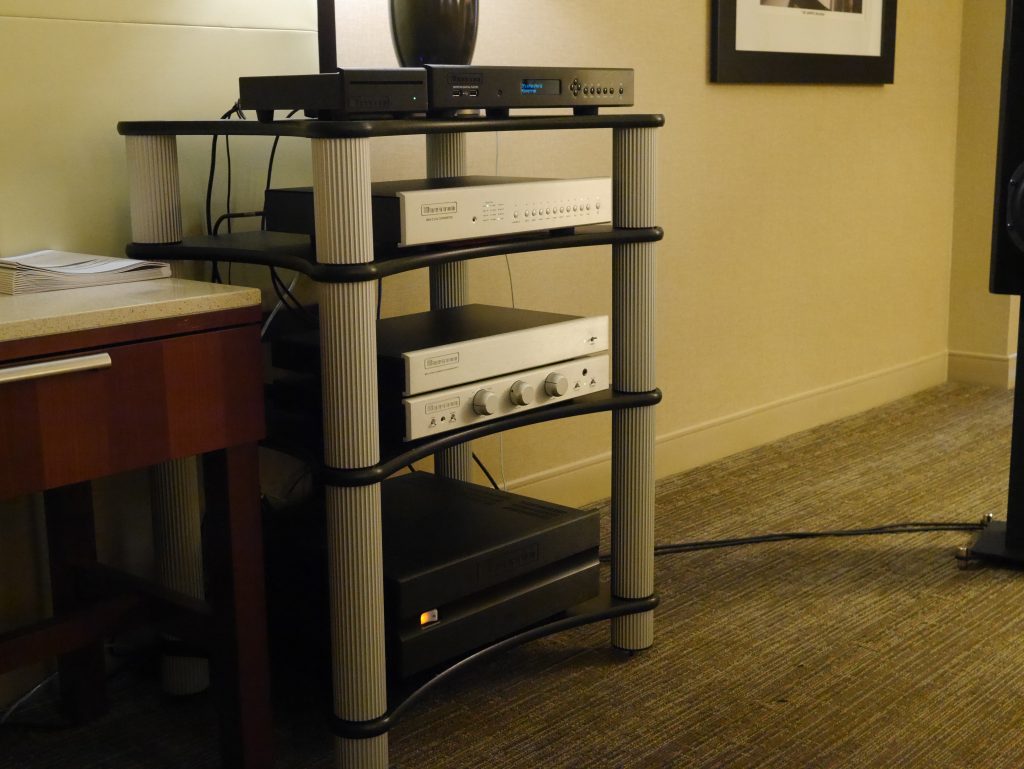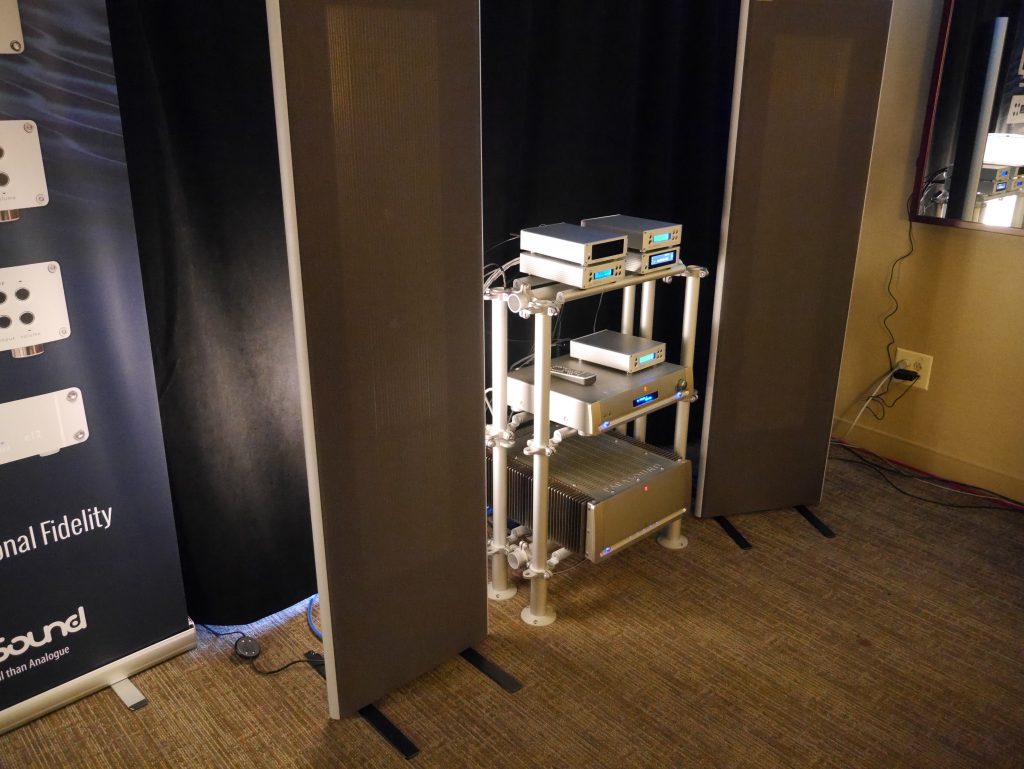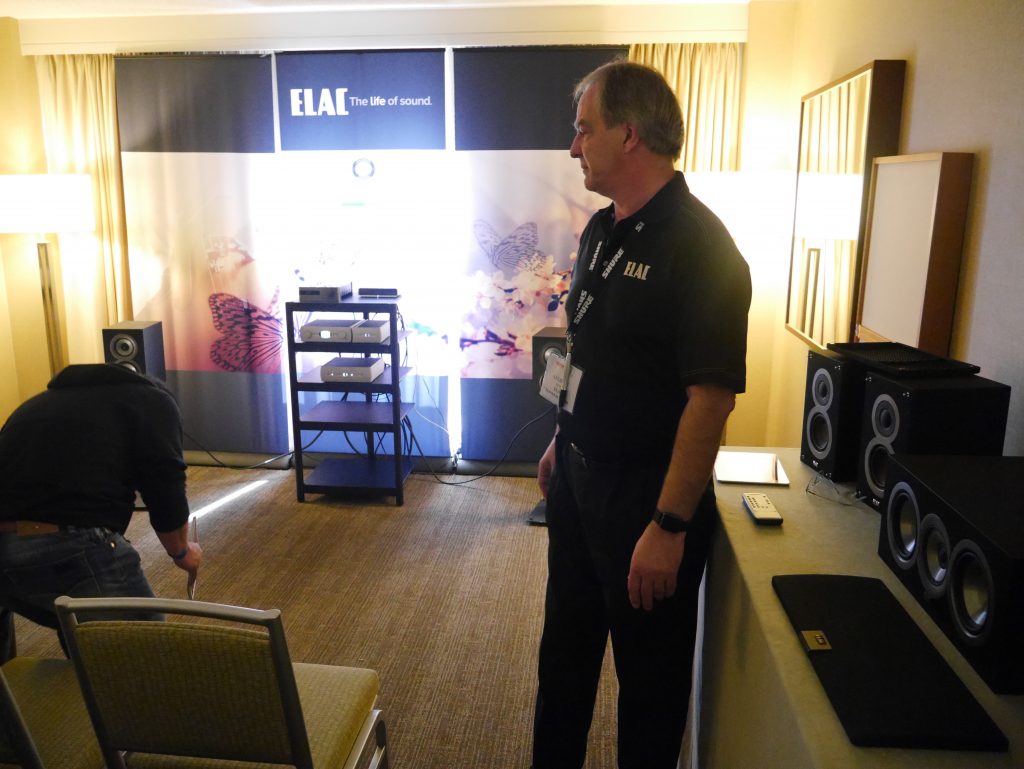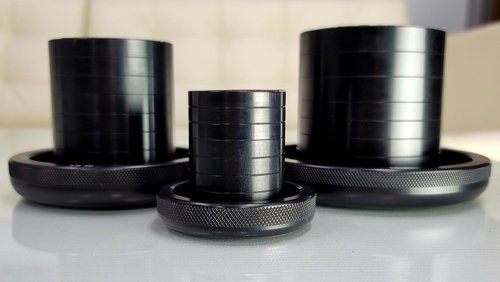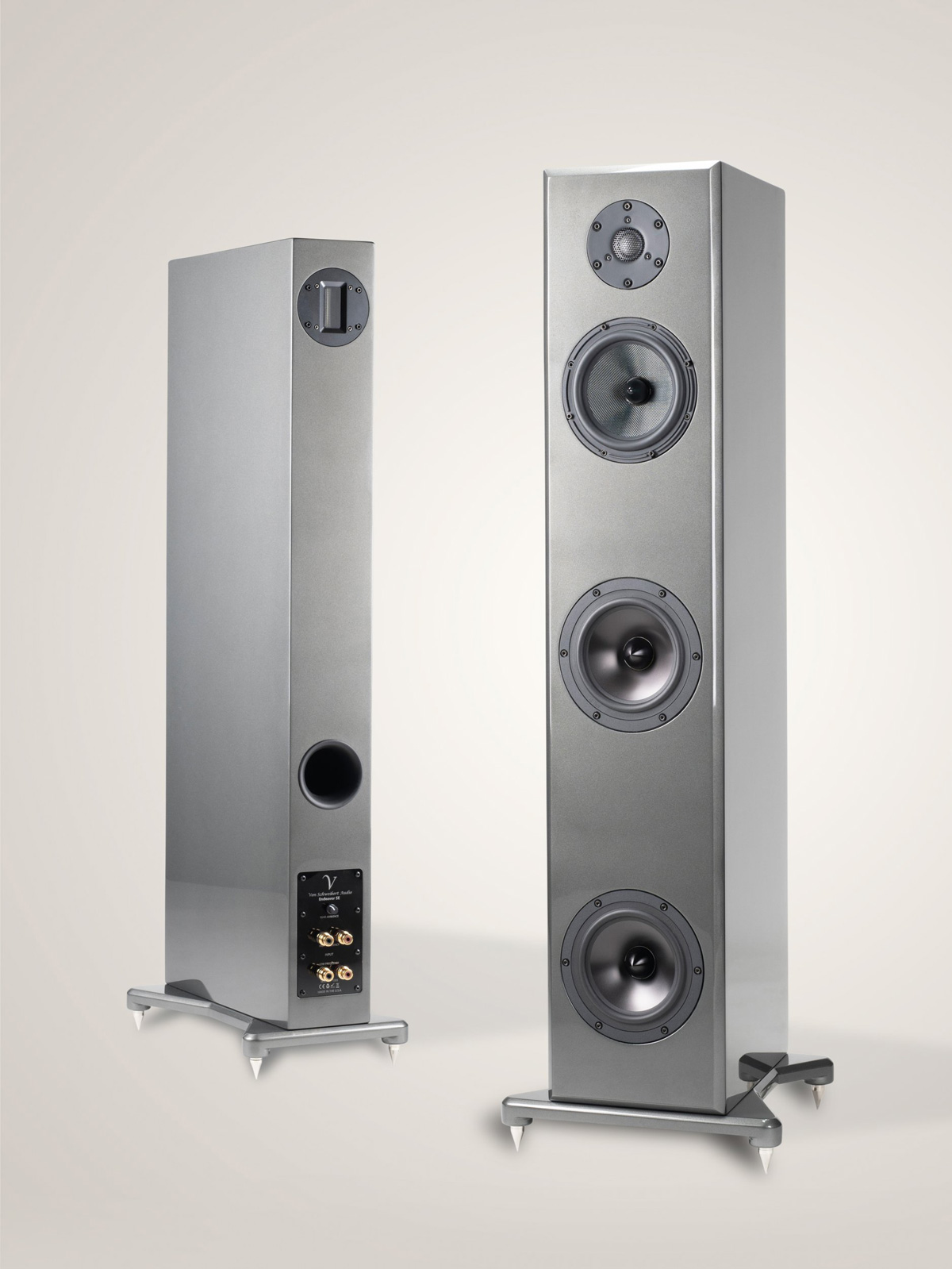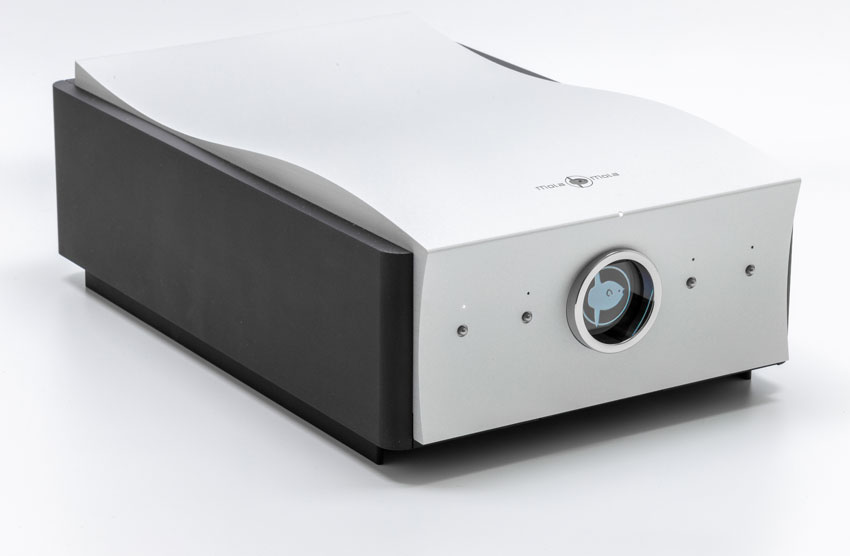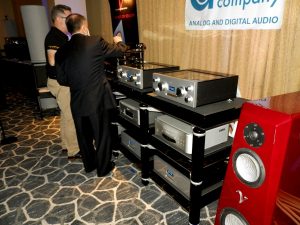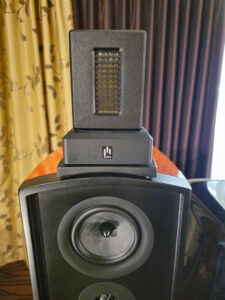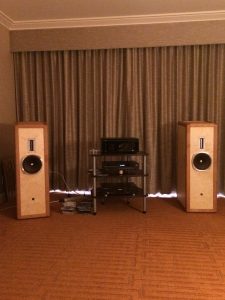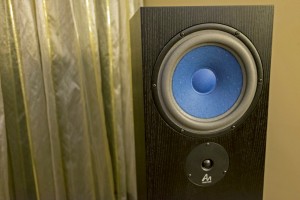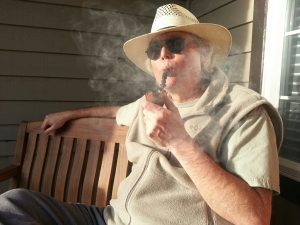Ever since the annual AXPONA/Chicago high-end show relocated in 2014 to the jazzy Westin O'Hare, located just down the street from the show's former home, the far more modest Doubletree Inn, I have approached this annual event with a combination of cautious optimism and mild trepidation. You see, whatever its shortcomings as a hotel (tired and outdated rooms, only serviceable food, and limited space) the Doubletree boasted something the Westin can't: great sounding spaces.
Yes, the hotel experience at the Westin is vastly superior to that at the Doubletree (nicer rooms, great food at the Benchmark Gastropub, excellent facilities, and lots and lots of space), but the Westin's exhibitor rooms have not, for the most part, delivered the sonic goods. There are always a number of noteworthy exceptions, several of which I describe below, but overall, the sonic picture at this year's show mirrored that of the last two: serviceable sound punctuated by rare oases of aural excellence. So, while this year's show saw more bodies, more frenetic motion, and by extension more sound, overall sound quality did not improve appreciably (although the live jazz and classical performances near the marketplace reception area were generally superbly played and superb sounding).
Now that I've grumbled to my heart's content, let me add that as a social and business event, I really enjoyed AXPONA 2016. Spirits seemed high overall, and exhibitors (manufacturers, distributors, and retailers alike) assessed their fortunes and the overall health of the high end in reasonably optimistic terms. And while I don't have any numbers to back this up, I got the impression that as AXPONA has matured, more and more manufacturers are choosing to launch new products in Rosemont instead of waiting until the Munich and Rocky Mountain shows.
This year's show was rewarding for me personally because it marked my first show coverage outing for Positive Feedback. The response I got from exhibitors and fellow scribes alike was overwhelmingly enthusiastic. It goes without saying that I am extremely happy to be the newest member of the PF team and look forward to sharing my audio thoughts and impressions with our readership.
And now, on with the festivities!
Bryston Room
The inspiring Bryston suite was my first show destination. The Canadian electronics gurus had on hand a complete Bryston set-up, including cables, digital sources, and speakers. To my surprise, I found the sound quality very good overall. I heard a dynamically robust presentation coupled to an open, airy soundstage. Yes, there was perhaps a touch of bass boom (a common problem throughout the show), but overall, the compact/stand-mount Mini T bookshelf speakers sounded quite lively and dynamic at the tail end of the new 7B3 mono amps, with nary a trace of glare or hardness.
Bryston's design team appears to have met its stated goal of delivering an overall neutral and natural presentation by ensuring an essentially neutral power response. I liked the sound of the amps so much, I requested a review sample of the new 4B3 stereo model. Stay tuned for further developments. The Bryston house sound really is worth seeking out.
exaSound Room
One of the best sounding rooms period delivered an abundance of sonic riches, and a welcome surprise to boot. I'm talking about the exaSound room and the company's gregarious president, George Klissarov. George paired his latest digital offerings (the PlayPoint network player ($1995) and e28 Mk. II FC DAC ($3649)) with an affordable slate of Parasound goodies (Halo P7 multi-channel preamp ($2000) and Halo A51 5-channel power amp ($4500)), all driving the stunning Magneplanar 1.7i speakers (review forthcoming). As with last year's best-of-show exaSound/Pass Labs/Magneplanar setup, this year's system nipped at the heels of pricier systems, but at a far more approachable tariff. The opening bars of Mahler's Fifth Symphony (courtesy of a Channel Classics DSD download featuring conductor Ivan Fischer and the world-class Budapest Festival Orchestra) sounded wonderfully coherent and transparent, with natural timbres, saturated tone colors, and robust dynamics.
The alluded-to surprise came when I asked George to share the origins of his last name, which I thought might be Russian. You see, I served as a Fulbright scholar in the Russian Federation in 06-07, speak a little Russian, and so have an affinity for almost all things Russian, Mr. Putin's politics notwithstanding. To my surprise, George stated that he hails not from Russia, but from Bulgaria. As it so happens, I lived in Bulgaria from 1993-1998 (I'll explain why and how at a later date). And yes, I speak a little Bulgarian, too (though not as much, or as fluently, as I would like). George and I shared some war stories (in Bulgarian—my apologies to the non-Bulgarian speakers in the room at the time) and exchanged contact information. George, don't be surprised if PF hits you up soon for a review sample!
Silnote Audio Room
The Silnote Audio suite featured an older pair of B&W 802 Nautilus speakers ($8500) driven surprisingly well by a Jadis DA60 tube integrated amp ($8995). While not the most dynamic set-up (the amp is probably to blame here), the smooth presentation, silky textures and honey-sweet timbres proved seductive. Gene Ammon's earthy tenor sounded convincingly fat, rich and round, while New York jazz icon Sheila Jordan's dusky vocals soared unimpeded courtesy of a cherished copy of her remarkable 1984 Blackhawk Records LP release The Crossing. A beautiful Transrotor Fat Bob Reference turntable ($10,000), here joined by the always-reliable SME 309 tonearm ($2395) and a Koetsu Black MC cartridge ($2495), all feeding a Krell KPE Reference phono stage ($2200), rounded out a somewhat warmly balanced analog front end. A gaggle of Silnote's lovely hand-made interconnects, and speaker and power cables held everything together. Look for my upcoming review of the lovely Orion M1 interconnects in the near future.
ELAC/Audio Alchemy Room
At the other end of the price spectrum, an enthusiastic and hushed crowd listened with rapt attention as ELAC's engaging lead designer, the brilliant Andrew Jones, discussed and demoed his latest thinking on affordable loudspeakers, the pint-sized Uni-Fi UB5. Priced at a scant $499/pair, these solidly-braced, vinyl wrapped imps feature a 5-inch aluminum bass driver wed to a novel 4-inch aluminum midrange driver. Rare at this price point, the speaker's 1-inch soft-dome tweeter is mounted concentrically within the midrange driver's voice coil. This potent mini spoke with a unified voice and nary a whiff of the three drivers functioning separately. These remarkably coherent, cohesive and transparent upstarts had just enough mid-bass body and heft to sound genuinely convincing.
A collection of Audio Alchemy electronics and ELAC's soon-to-be released Discovery Series DS-S101-G Music Server as source (great product, awful name) sounded just swell driving the UB5s. Trust me when I say that the UB5 is a game changer for beer budget music lovers. All the while I kept thinking to myself: "If this is what Jones can design for a scant 500 bucks, what caliber of mini can he build for 1500?" Only time will tell, but I suspect we won't have to wait very long for AJ's response. Wow!
Gershman Acoustics/LAMM Industries Room
One of the biggest surprises of the show, for me at least, came courtesy of the Gershman Acoustics/LAMM Industries exhibit. The Gershman team demoed a new addition to its lineup of impressive speakers, the compact Inspiration model (approx. $5000/pair/dedicated stand included). The Inspiration features a novel triangular cabinet bracing system and dual port bass tuning arrangement.
The openness, transparency and immediacy of this beefy three-way monitor made me stand up and take notice. Diana Krall and team sounded superbly neutral, vibrant, and engagingly alive on a disc whose name I didn't catch. The lovely LAMM M1.2 mono amps, Oracle CD player, and Nordost cabling made for a potent musical combination. Unfortunately, a price sheet was not available during my visit. While the Inspiration's underwhelming (IMHO) looks probably won't win any beauty contests, this is one of the few speakers (and rooms) that produced living, breathing music, not just generic sound. This is a model well worth seeking out.
Border Patrol/Volti Audio Suite
Border Patrol's talented head honcho Gary Dews and I spent about an hour spinning vinyl and talking shop on the first floor. Gary paired a suite of his stunning reference-level tube electronics (S20 EXD power amp plus dual outboard EXS PSUs – $27,750; EXT1 triode line-stage with onboard phono-stage – $12,250; Acoustic Signature Challenger Mk. III turntable with TA-1000 arm and Soundsmith Aida cartridge) with a pair of Volti Audio Vittora horns ($25,750) and matching ELF subs ($3500 each) to produce some of the best sound at the show (although our own Greg Weaver, on sabbatical leave with The Absolute Sound, thought the sound highly dependent on the recording used).
My original LP pressing of Bartok's Dance Suite for Orchestra (Everest Records SDBR-3022) sounded quite lively, with natural timbres and superb dynamic grip. I detected no glaring discontinuity between the subs and the Vittoras. Lew Tabackin's vibrato-rich tenor possessed the requisite bite and air, even if the recoding itself (the Akiyoshi-Takackin Big Band's Tanuki's Night Out (JAM 006)) sounded ever so two-dimensional. Greg pondered whether the affordable but otherwise fine-sounding Triode Wires might be the limiting factor in this setup.
Avantgarde Acoustics/Sutherland Engineering Room
I got a chance to chat with the gracious Ron Sutherland of Sutherland Engineering fame about his new dual mono phono-stage, the silver-wired Argentum (approx. $16K with both balanced and single-ended inputs and outputs, a Sutherland first I believe). Ron teamed up with the Avantgarde Acoustics folks to produce a lovely sounding system that featured the Avantgarde Zero 1 horns (a powered affair and with updated and improved DSP correction software), a Bergmann air-bearing turntable, and a Sutherland Duo phono stage (approx. $4000). Hard-drive sourced files Wi-Fi streamed and controlled by a Roon-enabled Ipad (I think) rounded out the source options. Both digital and analog recordings (all processed in the digital domain) sounded sweet and engaging, with rich tone colors, crisp dynamics, open staging, and perhaps just a touch of fine veiling, but I can't be sure about the latter. As true plug-n-play options go, these speakers are something quite special, and quite fairly priced at just over $20K.
Expressimo Audio Table
A near end-of-show visit to the Marketplace turned up a promising find. As I successfully navigated my way past all of the jiggling and bouncing rambunctiousness over at the Technics table (if you were there, you know whereof I speak), I stumbled on what looked like the brand new turntable recently announced by one of the leading super-table makers in the business. As it so happens, the table's designer, the affable Brian Calaio, and the other party recently had a falling out. Eager to share his work with the world, Brian (the man behind the superb Expressimo Audio line of product upgrades) has decided to produce and market the table (tables actually) on his own under the Expressimo brand name.
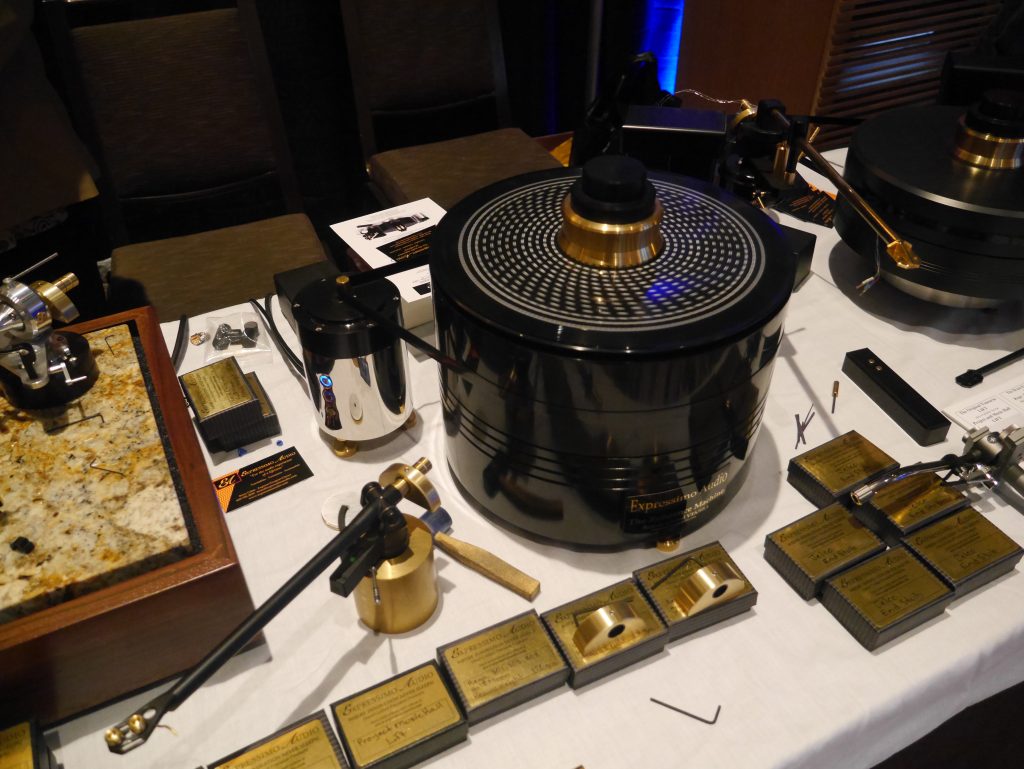
Brian had on static display his mammoth and gorgeous Reference Machine turntable with gold-finished Mongoose tonearm ($45,000 sold direct as a package) and the smaller but till snazzy A1 Series model and Mongoose arm ($30,000 the package direct). The price includes delivery and a full-day's set-up by Brian. Both tables feature massive aluminum plinths, heavy black Delrin platters (soon to be available in white), 6 and 5-inch long spindle assemblies respectively, ceramic bearings, and remote controlled VTA/SRA adjustability. VTA/SRA settings are adjustable during playback. Brian and I are already discussing a possible review.
Perspectives and parting thoughts: The Voice That Is Room
Last, but certainly not least: The Voice That Is room. Our own Robert Youman already cannily described the elegant Doug White's stellar room and equally stellar setup skills in his earlier show report, so I won't belabor matters by trying to add a few superfluous embellishments of my own. Rather, I want to end this report with a story that captures the true essence of what the High-End should aspire toward, but so rarely does. As Doug played through a soothing selection of smooth jazz, soul, and adult R&B numbers (bless you, brother), he kept asking whether I wanted to move to the 'sweet spot' from my off-center position, seeing as how I was "on the job" so to speak. I politely declined, preferring to let my fellow hobbyists enjoy the best spot in the house.
In all honesty, I did get mildly annoyed when two "sweet spot" homesteaders (one White, the other African American) remained securely planted in their seats for what seemed an eternity. Just as I was about to head to another room, the white guy stood up and lovingly took his black friend by the arm, helping him to his feet. He then handed his friend a walking cane for the sight impaired and gently shepherded his sightless companion out of the room. At that moment, I didn't care if these guys remained in the sweet spot all day, so deeply moving was this inspiring display of selflessness, affection, and fraternal loyalty. I left the room speechless and a bit tearful.
Nothing, absolutely nothing I saw, or heard, at the show moved me quite so much.
Godspeed!




